Meet with Alexis Rosenfeld: explorer of the underwater world

The ocean is his universe. Diver and photographer, he explores the mysteries of the underwater world and shares its wonders. His fight is above all environmental, and ultimately he seeks to show the ecosystems' fragility. Commissioned by UNESCO for the "1 Ocean, The Anatomy" project over no less than ten years, he is now leading a unique photography mission. Alexis Rosenfeld tells us about this exploration. Let's dive into the big blue, a universe in need for preservation.
INTERVIEW
Sustainability MAG: What attracts you under the water?
Alexis Rosenfeld: Passion, fascination and especially exploration. The endeavour to discover the unknown. Diving deep into the ocean is like the magic we experience as children if we want to conquer our dreams.
Through your photographs, the ocean is presented as a wonderful resource. Is your goal to show the magic of life?
My idea is to be able to convey something. This means to be able to change the fact that not everybody is conscious that there is massive destruction of this planet’s lung and to contribute to a positive transformation. The idea is to eliminate all this anxiety saying, "it’s not good, it’s not right, we mustn’t…" by saying "look, it’s absolutely fantastic, it’s wonderful, these are unique ecosystems, they help us breathe, they feed us, and they manage the climate for us".
So you decided to have a positive narrative towards the dangers that threaten the ocean?
Not only that, but I also want to show what is ugly and wrong, raise awareness about that. But, ending with a positive note is important because we need this, since we have been living through complicated years.
Raising awareness for the cause of the oceans is what you did when you joined the Greenpeace and CNRS mission on their ship Esperanza?
It was fascinating because it was the first time CNRS joined with an NGO like Greenpeace for research purposes where we would explore with 6 or 7 fellow divers the deep reef off the Amazon mouth. The idea was to characterise this place, to understand it in order to protect it. So, exploration at the service of science. These are very complicated dives. We were 300 kilometres off the river’s mouth, which is the river with the highest flow. There is an unimaginable life 130 meters below the sea surface. Life in an incredible world, so-called the mesophotic habitat. A world between light and night. You can find clusters of echinoderms, crinoids, which are prehistoric species of sponges.
Have you discovered any new species there?
I believe that the divers brought up between 1,500 and 2,000 samples: water samples, species samples, individual samples. Among them, there is a new species, which is still uncharacterised. It will be named very soon. It is a brittle star, which belongs to the family of the echinoderms, like sea urchins, starfish and sea cucumbers: a tiny and dynamic sea star.
So there is still a lot to discover within biodiversity?
Yes, there is still a lot to discover. What is terrible is that we managed to destroy species that we still haven't got to know in the time frame we are living here. It is actually tragic.
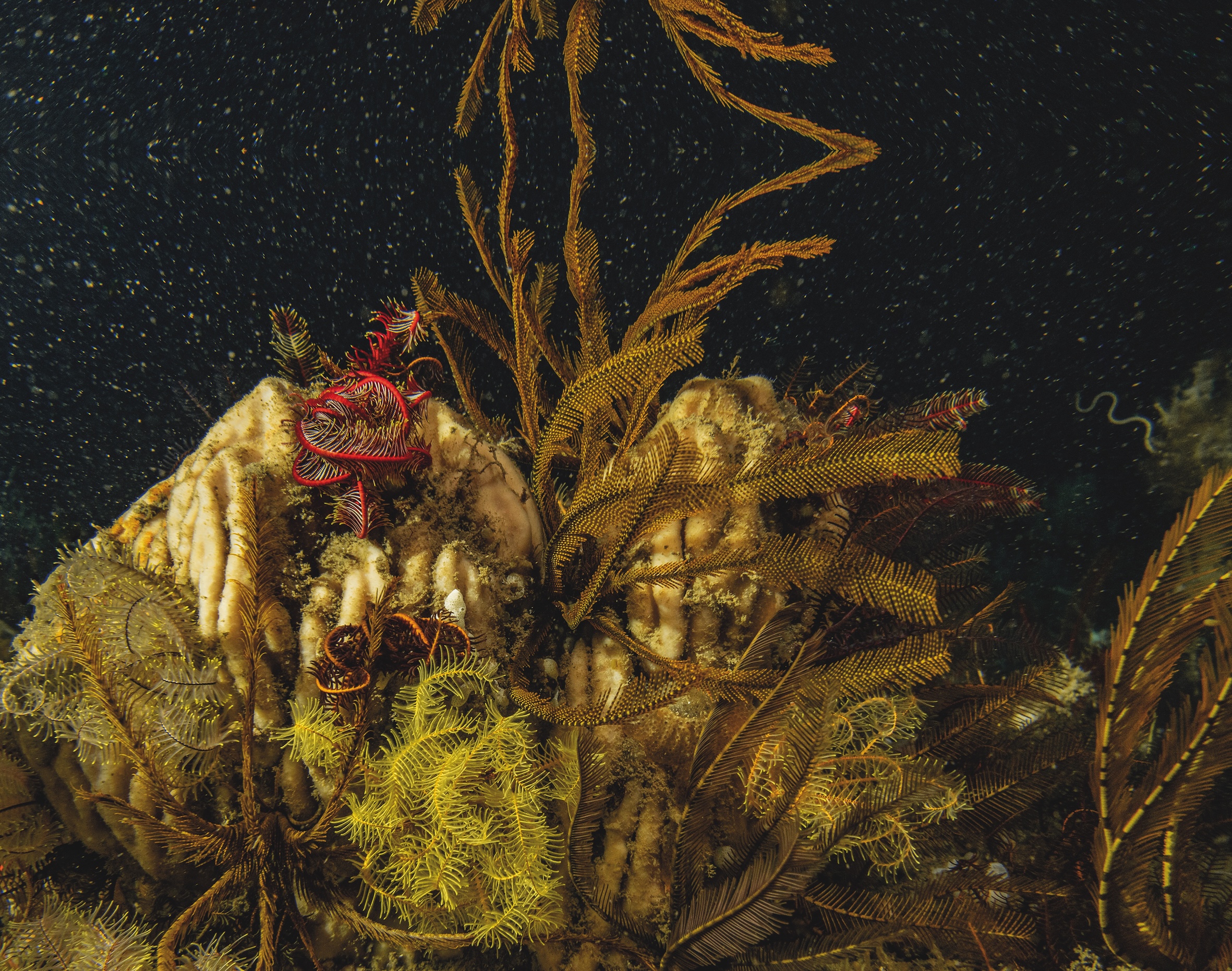
The mesophotic habitat 130 meters below the surface
Knowing your strong commitment, UNESCO has entrusted you with the extraordinary task of being the great witness of the deep: the 1 Ocean mission. What is its purpose?
The United Nations have decided to launch a major programme about the ocean, and this is the decade of ocean science at the service of protected marine area. The UNESCO and its Intergovernmental Oceanographic Commission are the project leaders. It is very ambitious because they want to make clear how science and the ocean are essential for humanity. 1 Ocean, is the great testimony of the ocean. It is ten years of exploration, thousands of photographs, portrays of personalities, documentaries, photo reports. The idea is to create a photo database that would be the heritage created by this project and managed by UNESCO.
Which region did you decide to start with?
North of New Caledonia, in the heart of the Coral Sea Natural Park, which is the fourth largest reserve in the world. And this place, the Entrecasteaux archipelago, is considered the most pristine and most prosperous place on the planet. So perhaps it was right to start with this treasure, this vault of biodiversity. This place is preserved by its remoteness.
You are also showing the vulnerability of the ocean. We know that the good health of oceans is decisive, ecosystem services they provide are of the essence. Could you describe how we are tributary from the ocean?
For sure, we will be more and more dependent on the ocean. I can tell you about it from my point of view, as a photographer, not as a scientist, I’m not a scientist. But, for instance, the coral ecosystem provides many services. First, it protects the coast from erosion, which is essential because you will have ecological migration if you don’t have any barriers anymore. Moreover, coral reefs account for 30% of overall ocean biodiversity. It’s one of the major nurseries worldwide. Medicines of tomorrow and even today's, come from them. The disappearance of coral reefs means that we will no longer have these medicines against cancer or tumours. It is also a supply of protein for many local populations. So these many ecosystem services are very obvious.
Another example, whales. We learned that they have a key role in fertilising marine areas. The IMF has put a figure of 2 million dollars on the ecosystem services rendered by a major whale. Can you explain why?
The whole system is important. We must remember that. Well, it is great to talk about a whale, a dolphin, what we call in our jargon umbrella species. They allow us to approach other topics. We understood that in their excrements, whales help produce phytoplankton. It is a virtuous circle. The whale eats krill, which is zooplankton. Zooplankton feeds from phytoplankton, and the whale helps to fertilise phytoplankton. It is the story of the smallest and the largest. Yet, phytoplankton is decisive in the absorption of carbon and the production of oxygen. 50% of the oxygen we breathe originates from the ocean, so phytoplankton is vital.
Unfortunately many whale species have seen their populations decline, and you have been a great witness of it.
An unfortunate witness, yes. It is a sad story, that of "Fluker", a rorqual. On the picture I took, it is nothing but skin and bone. This whale, which has been seen around the Mediterranean, had been known for about ten years because half of its tail had been cut off. Unfortunately, it was caught in a net two years ago, which cut off the remaining part of its tail. She could no longer dive to feed because whales don't feed at the surface; they feed at a depth exceeding 60, 80 metres down. So she died of starvation. The idea of telling this story is to explain that the primary non-natural cause for death in the marine mammal, in the Mediterranean at least, is collisions with ships. WWF's work today is to try to imagine a system that would avoid these collisions. The WWF has in fact installed beacons to listen to whales using a triangulation system so that it can send messages to the boats and tell them to "be careful, change your route, there's a whale, slow down". This is an ongoing project which is very well advanced.
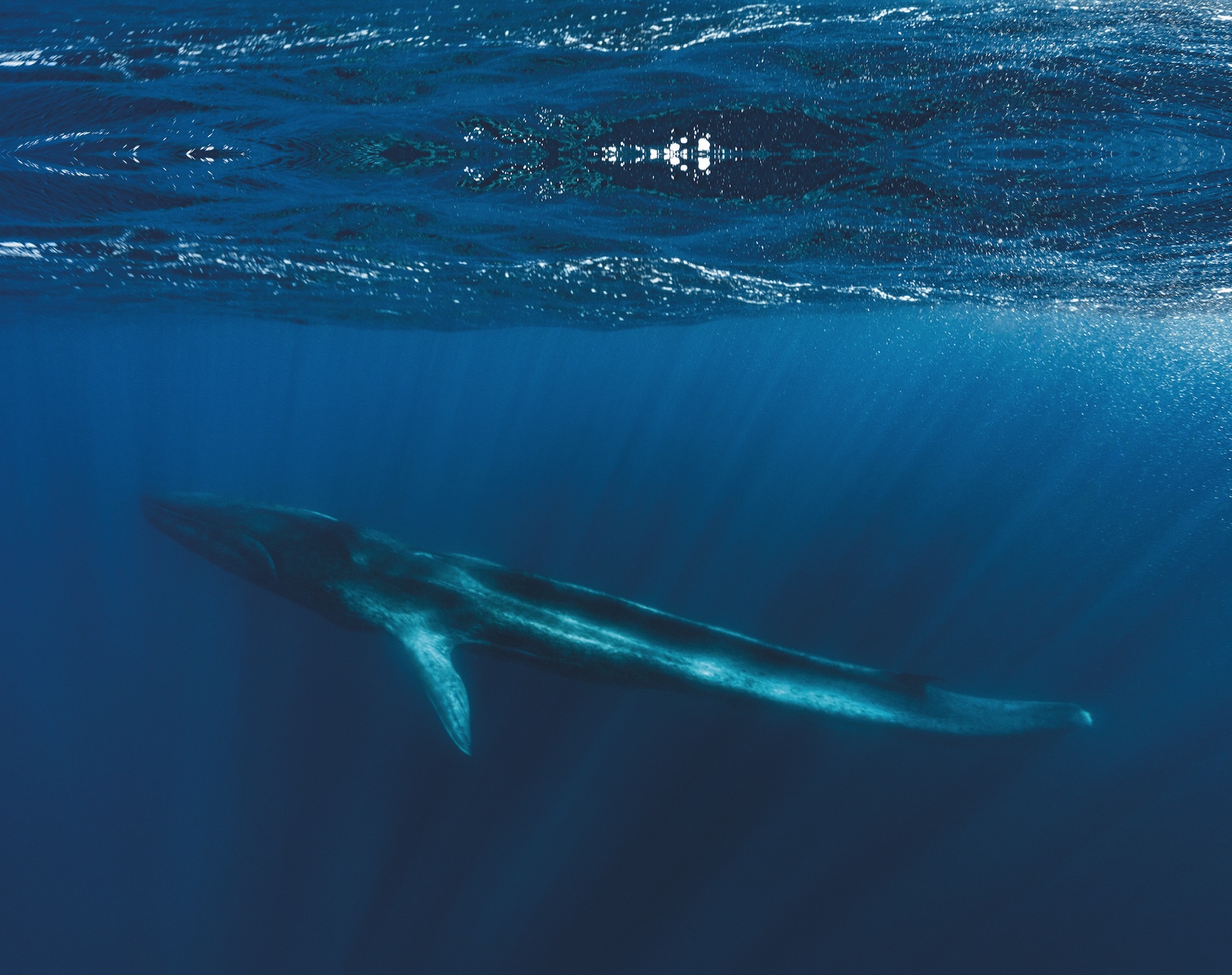
Fluker, this rorqual, whose tail was cut off by a fishing net, died of starvation.
On the other hand, sometimes some species become too numerous in ecosystems that they unbalance.
Yes, like the flying scorpion fish which is found in the Caribbean, an extremely poisonous fish. This is what we call an invasive species. This fish has been imported, which often happens via the ballast tanks that stabilise ships and have to be emptied and refilled regularly. These flying scorpion fishes have developed and are quite harmful for the ecosystem to which they are not at all geared to them. The corollary of this is the impact on the economy. Because not only does it destroys an ecosystem, but it also reduces the possibility of fishing and the economy in this area. That is what is happening over there in the Caribbean. So we are trying to find solutions. These fishes are caught by local clubs and by people who spot them even though they seem to be growing too fast to do so. The only good thing is that it is very good to eat!
There are major threats to marine ecosystems, which are various: overfishing, excessive tourist numbers, climate, pollution... Specifically, on the issue of plastic, we can see attempts at cleaning up the ocean. Do you think this is an illusion?
Yes, of course, it is ridiculous. We know that only 1% to 2 % of plastic waste remain at the surface or along the coast. The remainder is at the bottom of the sea. We can’t go and fetch. We can’t collect it. It would be ridiculous to envisage that. When it is at 20,000 or 2,000 metres, we don't go looking for it because the carbon impact would be far too significant. The biopsy samples that have been taken in the Mediterranean from whales and sperm whales show that 100% of species are polluted by plastic. Few people are aware of the quantities of plastics or microplastics ingested by everyone every day. This is suicide.
You have a keen interest in experiments and have photographed some quite astonishing experiences, such as underwater agricultural greenhouses.
Yes. It remains a child’s dream to have done this completely utopian report. This is in the Mediterranean, Italians thought of creating underwater greenhouses, in order perhaps to develop crops in arid countries where you can’t grow plants at the surface of the earth. The advantage of these greenhouses is that they won’t use pesticides or watering because water evaporates within these half-spheres, allowing the plants to be watered. These tomatoes and basil are picked by "farmers divers". For the moment, it is still an experiment. In reality, the carbon impact remains significant at this stage, but I sincerely believe that we won't achieve anything without endeavours, ideas, and desire. We need to explore, to look for solutions, to think, and that is what this Nemo Garden team is doing.
What actions do you recommend to take care of these ecosystems?
I would talk about education, but education in the broad sense – this tremendous virtuous circle. Governments, NGOs, citizens, companies, everyone should talk one to another! We have solutions; we know that today.
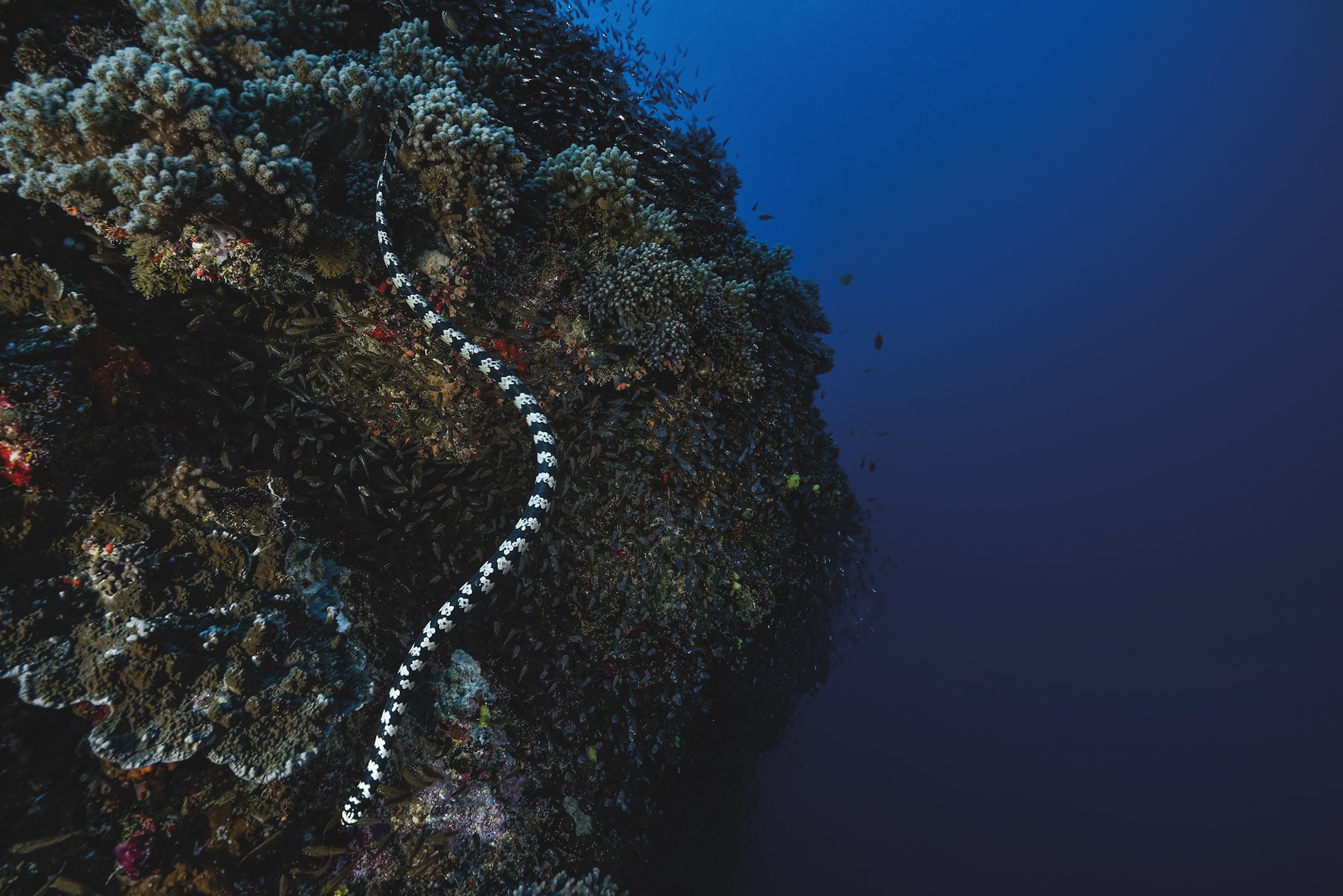
Sea snake in the Entrecasteaux archipelago, a species thought to be extinct.
The stated objective is to protect 30% of the surface area of oceans. Do you think this is the top priority?
Yes, we’ve been knowing this for long. We know very well how a reserve works. A protected marine area is something highly functional in terms of economy, biodiversity, and resources. It is a bit like a financial investment: an investment of one million euros with a yield of 10% per year. Our reserve is our financial investment, that is the analogy. Everything that comes out of the reserve is the return. That 10% we can fish, eat, sell. It's the local economy. If we start taking and destroying what is in the reserve, the yield will be much less and won’t last for long. It is extremely profitable to have a reserve and to protect it well. The marine protected area system is an effective, efficient, and probably the best system to protect our biodiversity.
When you go into these protected and remote areas to observe, do you ever find species we thought were extinct?
Yes. In the Entrecasteaux archipelago, the most pristine and richest reserve in the world. When I showed this photograph I had taken of a sea snake to a scientist based in Noumea, she was quite surprised because, near Noumea, where she regularly observes it, it has lost its original colour. It has grown black because pollution has changed its metabolism. We found it in its natural colour, far from humans.
 |
Alexis Rosenfeld was the guest of the Grand Entretien at the Luxembourg Sustainability Forum 2021 on 13 October. Watch his full testimony here.
|
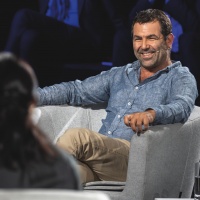
Alexis Rosenfeld
discovered diving at the age of 8. From then, he never stopped, making the underwater world his universe. His journey allowed him to share Commander Cousteau’s last expedition in Madagascar. Explorer dazzled by the beauties and mysteries of the oceans, this diver and photographer of the deep is an enlightened actor of the environmental cause. In 2018, he initiated a collaboration with the UNESCO’s Intergovernmental Oceanographic Commission: "Coral Reefs, a Challenge for Humanity". In 2021, they launched the project "1 Ocean, the Anatomy", a decade of exploration built around 3 missions: explore, document, transmit. Alexis Rosenfeld defines himself as a storyteller, a witness.




